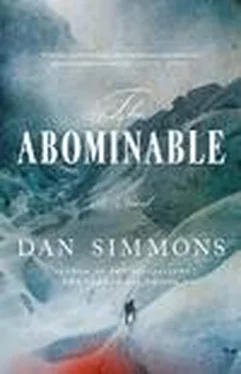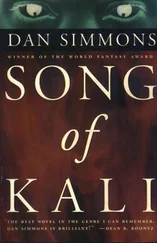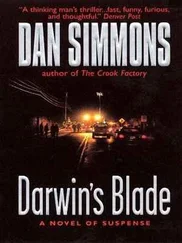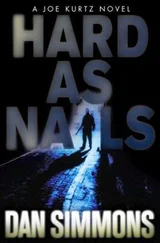Then I walked to the far left—north—side of this cone-shaped snow shelf, found a corner there where I could kick together a tiny snow platform on which to stand, ran the rope once around the only rock belay I could find—a three-inch upward-slanting spur about the height of my nose but smaller than my nose—shook the rope loose, took up its slack, set it over my shoulder in the way I’d done a thousand times, and shouted “On belay!”
“Climbing!” shouted the Deacon and—sometimes using my taut rope to keep himself from catapulting off the face backward—he clambered up toward me in his George-Mallory-cum-electrified-spider mode.
Within minutes he was up with me. I knew I had to start moving—we were in the shadow here, and I was freezing without my goose down outer layers or serious mittens and gloves, my body was already shaking (perhaps partially from the adrenaline as well as from the cold)—so I wedged myself up two or three feet along the off-width crack in the corner and let Richard Davis Deacon take my place on the marvelously level square foot of snow I’d piled up in the corner. (An off-width crack, in climber parlance, is one that’s too wide for your hand or fist to find traction in, far too wide for a piton to be driven into—if you happen to be one of those iron-mongering Germans who even use pitons—but too goddamned narrow to wedge your entire body into. To most intents and purposes, other than tossing bottles or something into as a garbage pail, off-width cracks are useless.) Now my foot was in that crack, the pressure of the crampons on limestone and my two extended arms merely holding me a few feet higher than the top of the Deacon’s head there in the angle where the two cliff faces met. It was an exhausting position to hold at any altitude, and up here I knew I couldn’t hold it for more than a minute.
“Keep the belay rope tied on,” gasped the Deacon. His face was ashen from his climb, even with the help of my taut belay rope at times. I can’t imagine what my face looked like, but at the moment I felt like Moses coming down from Mount Sinai with two horns of light emanating from his temples. Only I was going up —with luck—not down.
“No,” I said. I held myself in place with my boot, my back, and one extended hand while I untied from my waist-rope harness, looped the belay rope twice over the cloth belt of my Norfolk jacket so it would stay with me as long as I was climbing but would pull loose the instant I peeled off the face, and started scrambling upward while I still had a trace of warmth and energy and will left anywhere in my shaking body.
21.
I knew the instant I started free-climbing the impossible Second Step that whether I lived another three minutes—including the time I’d still be conscious while falling a mile and a half—or lived another seventy years, this would be the climbing effort I would be most proud of.
I couldn’t breathe well because of the ragged constriction in my throat, but to hell with that. I’d taken in one deep but unsatisfying gulp of the frigid open air here above 28,140 feet, and now I would complete this climb on that single gulp of oxygen. Or not.
Conventional wisdom and climbing experience suggested that I should try to stay to the far left of the 25-foot face, using the off-width crack for something.
To hell with that. Staying close to that off-width crack, I felt in my aching gut, meant death. I took a narrow branch of one of the smaller rising cracks to the right instead.
The largest of the vertical cracks on the right was all but filled with small, loose stones. Again—death to get one’s boot or hand in there. Forget that as well.
Hand-jams and fingers on nonexistent holds—and speed, as much speed as I could muster—got me up the first two-thirds of the flat face. Looking down would have just made me laugh out loud—the curve of the earth had been visible since we’d reached the foot of the First Step; here on the Second Step, the tops of mountains 200 miles away were peering over the haze of that impossible curve, and the summit of every 8,000-meter peak in the Himalayas was below me now—so I just refrained from sightseeing and kept moving upward like a lizard on hot rock.
Only this rock wasn’t hot; it was freezing with the deep cold of outer space. This damned slab faced mostly north and rarely got the sun’s rays to warm it. My hands and every part of my body coming in contact with it, and I wanted all my body in contact with it, were absorbing that numbing cold faster than I could scramble.
I put my freezing hands where I somehow knew invisible fingerholds would be. The steel tips of my crampons shot sparks from limestone and granite.
I was nearing the top now—which was a fucking overhang, of course, and one unclimbable even in Wales on a summer day unless you had Prusik knots galore, a stout rope to hang from, and one of Jean-Claude’s dog-name jumar doohickeys to cam-slide up and over it with—so I kept clawing my way upward, one crampon point finding a hold, then slip-sliding to my left toward that hitherto useless goddamned off-width crack.
Okay. Just because the crack was still too large up here for my hand or forearm to jam in, and still too narrow to hold my body, that didn’t mean I couldn’t jam my elbow into the crack with an angled arm lock, then, a fraction of a second later, cram my left foot and leg in below. That, I realized, was my plan.
Some plan.
There were no solid footholds or handholds anywhere near that crack, of course—God wasn’t going to make it that easy—but friction and speed are God in such a free climb, and I prayed to, and used, both to get a few feet higher.
Lungs burning now, vision tunneling, ignoring the pain as the sharp rock of the crack ripped at my leg, I knee-barred a couple of yards more up toward the top of the Second Step and encountered…another overhang.
Once again I had to stop myself from laughing. It would have used up the last oxygen in my lungs, not that my lungs had any oxygen left in them.
The overhang petered out about six feet to my right, so I extended my right leg as far as I could, crampons scraping, until my boot found a ledge there that was about the width of a broken pencil. I shifted all my weight to it, couldn’t find a hold for my sliding, questing right hand, and just used a friction grip against a slightly less than vertical part of the slab.
One more ledge, three feet higher, for my left boot, a few more seconds of teetering above absolutely nothing, and then I was up, the top half of my body over the lip of the overhang, my right hand finding ridges and rocks and holds galore. I was on top of the Second Step.
I pulled myself all the way up and rolled a few more inches away from the edge so that the 8,000-foot drop wasn’t directly under my head and shoulders or feet or butt any longer.
I still couldn’t get a breath, but I could stand, and I did so. Just a couple of feet beyond the cliff face of the Second Step up there was a nice four-foot-long-by-three-foot-wide limestone bench, with plenty of rock ripples, ridges, and even a few stunted bollards behind it for tying off belay ropes.
Thank you, God.
My breath rasping so painfully in and out of my sore throat that I thought I might scream, instead I called down—in a steady and calm voice, I was told later by Dr. Pasang—for everyone to start coming up as I belayed them. I’d brought 120 feet of Miracle Rope with me; with the tie-offs around the rock bench and bollards, I used 97 feet of it.
The Deacon took his time, trying to free-climb major parts of the route himself but saving himself by falling back on the tension of the rope two or three times. I didn’t care and would never mention it to him. We weren’t in a contest here.
Читать дальше












